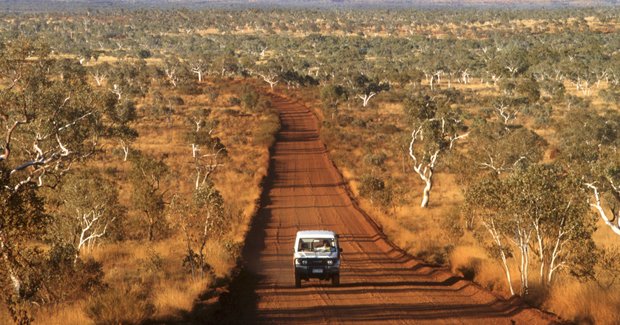Tips for driving in the Kimberley

DRIVING IN THE KIMBERLEY is not like a quick jaunt down the road. Precautions need to be taken and preparation is important.
- A five-day drive through the Kimberley
1. Take plenty of water – if you are doing an activity such as walking or climbing, carry at least two litres of water for each hour of activity.
2. Take extra food just in case.
3. Take a torch and matches.
4. If you’re renting a car, make sure the company shows you how to drive it!
5. Try to get all your driving done in daylight. But if you can’t, be careful. There’s sure to be cattle and other animals on the road. It helps to have a passenger in the front seat who keeps an eye out for roving beasts. They love the warmth of the roads in the evenings.
6. Take two spare tyres and make sure you have a good tool kit, puncture repair kit, and a high-lift jack.
7. Take a good, detailed map – not those crummy ones often given out at tourist centres.
8. Tell people where you’re going. Mobiles don’t work outside a few kilometres from the towns.
9. Fill up with fuel whenever you have the chance. Take advantage of available petrol stations.
10. If you become stuck, park so you can be seen, stay with your vehicle and conserve your food and water.
11. In the outback road conditions can vary. Be careful of soft edges and narrow roads. (If a truck is coming towards you, move to the side in plenty of time.)
12. Fine dust can conceal deep potholes and dust reduces visibility, so slow down.
13. Obey “road closed” signs when you find them. They are usually there for safety reasons.
14. Don’t swim anywhere in waterholes if there are warnings about crocodiles. Be particularly careful on beaches and areas where saltwater crocodiles are found.
15. The Gibb River Road is usually opened some time between mid-April and mid-May, depending on the wet season rains and when the river crossings have dropped low enough for vehicles to cross safely. For details, call 1800 013 314.
16. Get up-to-date road report conditions via the Main Roads Western Australia website: www.mainroads.wa.gov.au.

